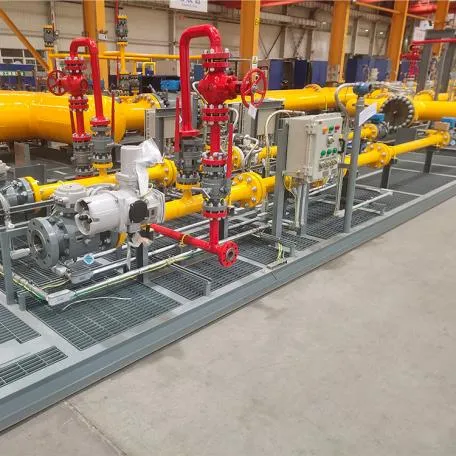- Industrial zone, South of Anping Town, Hengshui, Hebei, China.
- sales@hfpetromesh.com
- +86-18931809706
ss 304 grating
Understanding the SS304 Grating A Comprehensive Overview
In various industrial applications, the choice of materials is paramount due to durability, strength, and resistance to environmental factors. One such material that has gained remarkable attention is SS304 grating. This type of grating is primarily made from stainless steel grade 304, a widely used alloy known for its excellent corrosion resistance and robust mechanical properties.
What is SS304 Grating?
SS304 grating refers to a type of grating product manufactured from stainless steel 304 alloy. Stainless steel 304 is a versatile material that contains a mixture of iron, chromium (about 18%), and nickel (around 8%). This combination grants SS304 exceptional qualities, making it suitable for various environments, particularly those prone to corrosion.
Grating, in general, refers to a structure that consists of a framework of evenly spaced bars or slats. It is commonly used for flooring, walkways, and platforms. SS304 grating can take on several forms, including welded grating, swage-locked grating, and press-locked grating. Each type has its unique benefits and applications.
Characteristics of SS304 Grating
1. Corrosion Resistance One of the most notable features of SS304 grating is its high resistance to corrosion. The chromium content forms a passive layer of chromium oxide on the surface, which protects the underlying metal from rust and corrosion. This makes SS304 grating ideal for environments such as coastal areas, chemical processing plants, and waste treatment facilities.
2. Strength and Durability SS304 is known for its impressive tensile strength, making it suitable for heavy-duty applications. The grating can bear substantial loads, which is essential for industrial settings where mechanical stress is common.
3. Ease of Maintenance Stainless steel is relatively easy to clean and maintain. A simple wash with soap and water is often enough to keep SS304 grating looking new. This simplicity contributes to lower maintenance costs over time, making it a practical choice for many businesses.
4. Versatility SS304 grating can be manufactured in various sizes and configurations, which allows for customization based on specific project needs. Its versatility extends to applications in construction, transportation, and even residential areas.
ss 304 grating

5. Aesthetic Appeal The clean, polished look of SS304 grating contributes to its aesthetic appeal. It can enhance the visual appearance of a space, making it a suitable option not only for industrial but also for commercial and residential environments.
Applications of SS304 Grating
The versatility of SS304 grating means it can be used in multiple applications, including
- Industrial Flooring The strong load-bearing capacity makes SS304 grating an ideal choice for industrial flooring, where heavy machinery is often present. - Walkways and Platforms The slip-resistant surface provides safety in high-traffic areas, making it a popular choice for walkways and raised platforms.
- Drainage Systems SS304 grating is frequently used in drainage covers, ensuring that debris doesn't clog the system while allowing water to flow freely.
- Staircases and Ladders The grating’s design allows for easy drainage, making it a suitable material for staircases and ladders in outdoor environments or places that are subject to wet conditions.
- Architectural Features In modern architecture, SS304 grating is increasingly being used for decorative purposes in facades and railings due to its aesthetic appeal and strength.
Conclusion
SS304 grating stands out as a top choice in various industries due to its unparalleled corrosion resistance, strength, versatility, and ease of maintenance. As industries continue to prioritize materials that offer longevity and reliability, SS304 grating proves to be an enduring solution that meets these demands. Whether in industrial settings or architectural applications, SS304 grating represents a fusion of functionality and aesthetics, embodying the modern material choices reshaping our environments. Understanding its properties and applications is essential for anyone involved in construction, manufacturing, or design, as it opens up opportunities for safer and more durable structures.
-
The Power of Pyramid Shaker Screen - A 3-Dimensional SolutionNewsOct.24,2024
-
Exploring the Versatility and Durability of Steel GratingNewsOct.24,2024
-
Revolutionizing Drilling Efficiency with Steel Frame Shaker Screens for Mud Shale ShakersNewsOct.24,2024
-
Potential of Shale Shaker ScreensNewsOct.24,2024
-
Offshore Pipeline Counterweight Welded Mesh - Reinforced Mesh in Marine EngineeringNewsOct.24,2024
-
Revolutionizing Offshore Pipeline Stability with Concrete Weight Coating MeshNewsOct.24,2024
